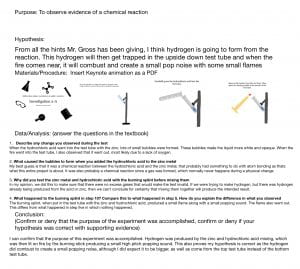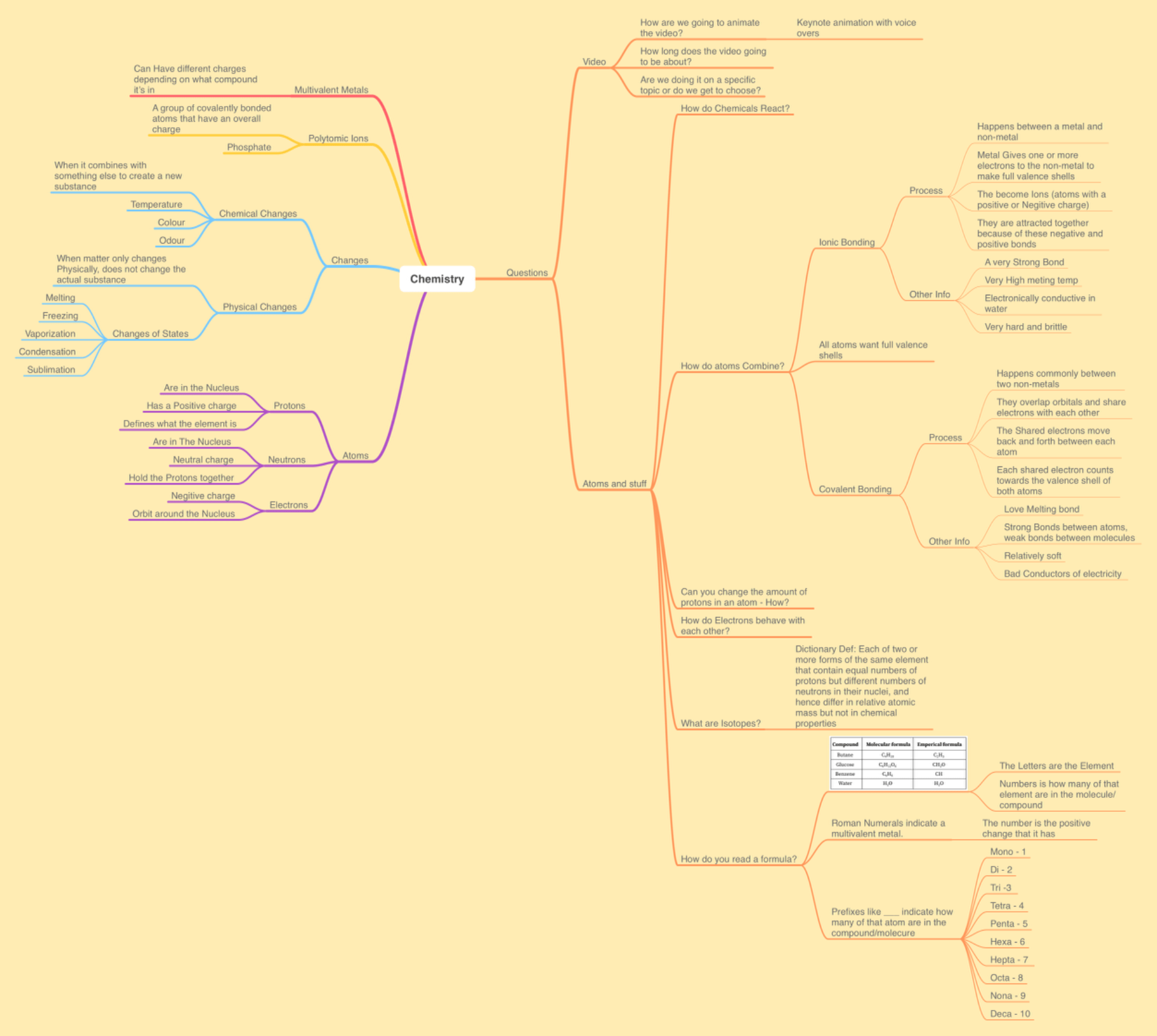Have you ever wondered if atoms had lives. What would happen if they could speak. What stories would they tell. Well in this project, that’s up to me to decide.
Chemistry Stories, The project where we animate atoms while they try to make as many friends as possible. But why do atoms pair up with other atoms to form compounds and molecules in the first place, well let’s find out.
To find out, here’s my final video that I created with all the knowledge I learned throughout the project.
But how did we get to the point of animating a lonely atom being crushed by a tsunami, well let’s back up.
As always, at the start of the project I made a mind map of all the knowledge I knew, so I could slowly add and see the new knowledge that I learned.
Questioning and Predicting
After this, we started learning all about chemical bonds. This included ionic bonds, covalent bonds, how the periodic table is set up, how to write and understand formulas, multivalent metals, polytonic ions and much more. We also did a science lab, where we produced hydrogen then lit it on fire to create a small popping sound.

All of this was in done in class, and I think I demonstrated a sustained intellectual curiosity throughout, by actively participating in the different labs, as well as getting most of the work done in class to minimize the amount of homework I would have.
Processing and Analyzing
After we had learned all we could about the bonding process, it was time to start on a story board. I ran into a problem trying to pick the right compound to base my story on. I didn’t want something that was simple because then it wouldn’t challenge me, but picking some too complicated would mean that I might not get all the science right, or might just take too long. I eventually settled on a compound name tripotassium phosphate. It was a pretty complicated compound, but it included both ionic and covalent bonding, and was also a polytomic atom, something that we were going to learn later on in the project. This picking phase can be really challenging because if you get it wrong, you need to start all over again. Thankfully I think I picked a compound that was just the right level for me this time, but it is something I need to look out for in the future.
Once I had the compound and the knowledge, It was time to story board. We had to include Bohr models in our animation, but thankfully we already learned all about those in a previous project (Particle Pop), so making those were not that difficult.

During this process, I also decided what I wanted my video to be about. I knew that I was not the best at making interesting and creative stories, so I decided to increase my chances of success and focus more on my strengths. This is why I made my story pretty random, and instead tried to incorporate humour to make it interesting. This turned out quite well in my opinion, the story makes absolutely no sense, but that’s what makes it good!
Now you might be asking, how did we animate the atoms? Well we did this using keynote. Yep, the Apple presentation software. With things like magic move, drawing a path, rotation and scaling, you can actually make some pretty cool things. I spent quite some time making sure that the animation would show the science of the bonding process clearly. This meant making each of the atoms move individually, making the animations as smooth as possible, and adding pop ups perfectly timed to the voice over.

Communicating:
Speaking of timed voice overs, I also tried to use as much scientific language in the video as possible. Using other topics like Polyatomic Ions to show sophisticated knowledge, as well as during the ionic bonding process using language like anion, cation to explain the charges. To make it line up with the keynote, I went through and timed the keynote so it would automatically move right as I was done speaking. This worked out really well, and in my opinion it looks like everything flows together well and is definitely something I will be doing again in the future.
—————————————————————————————————————————————
So, how does this answer the big question of this project?
How do the electron arrangements of atoms determine the chemical properties of elements and compounds?
Well, atoms want nothing more then to have a full valence shell, so arranging the electrons to form bonds with other atoms, is a great way of doing that. This can also change the properties of the element or compound. For example, if they form an ionic bond it will probably have a high melting temperature, be very strong and brittle, and be electrically conductive when dissolved in water. If it forms a covalent bond then it will be softer, have a lower melting temperature, and not be electrically conductive. The electron arrangement is really important because it decides what bond they are going to form. Metals have extra electrons that they want to give away, and are therefore more likely to form an ionic bond, while non-metals want a few extra electrons and are more likely to form a covalent bond.
Anyways that’s all I have for this project. I am very proud of my video, it’s one of the best ones I’ve made in a while. Learning all about the bonding process was as confusing as ever, but I managed to stick with it and learned a significant amount of new knowledge that will help me for projects to come!
See you next time,
Nolan🧪


